“Overmolding design merges functionality with aesthetics, allowing for the creation of parts that are not only structurally robust but also visually appealing.”
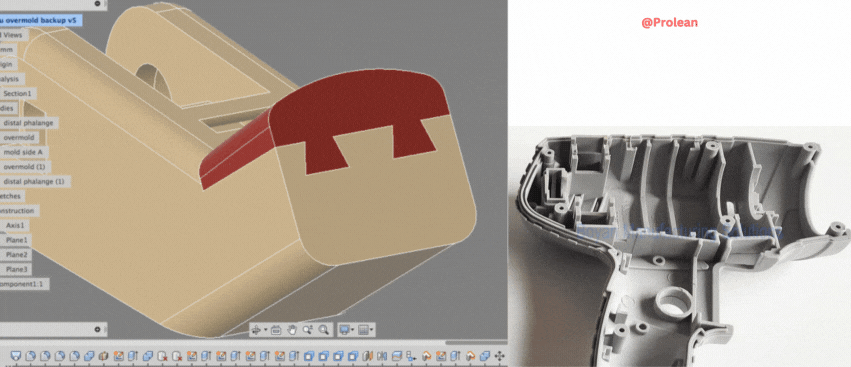
Overmolding techniques combine two or more materials into a single part. This technique typically involves molding a softer material onto a harder base. Meanwhile, adopting an over molding design guide optimizes the aesthetics and ergonomics. It also significantly improves performance. Over molding offers endless possibilities whether for adding a soft grip to a tool handle or creating multi-colored, multi-material consumer products.
However, achieving the perfect over-molding part or product requires understanding material compatibility, mold design, and processing parameters. This article will guide you through the over mold design, covering several aspects.
What is Overmolding?
The over-molding process combines two or more different materials into a single cohesive product. At its core, the technique involves molding a secondary material over a pre-existing part. This method is popular for adding soft-touch surfaces to hard plastic or metal components. As a result, it enhances functionality and user experience. Overmolding can integrate colors, textures, and various materials, such as plastics and rubbers, to create complex, multi-functional products.
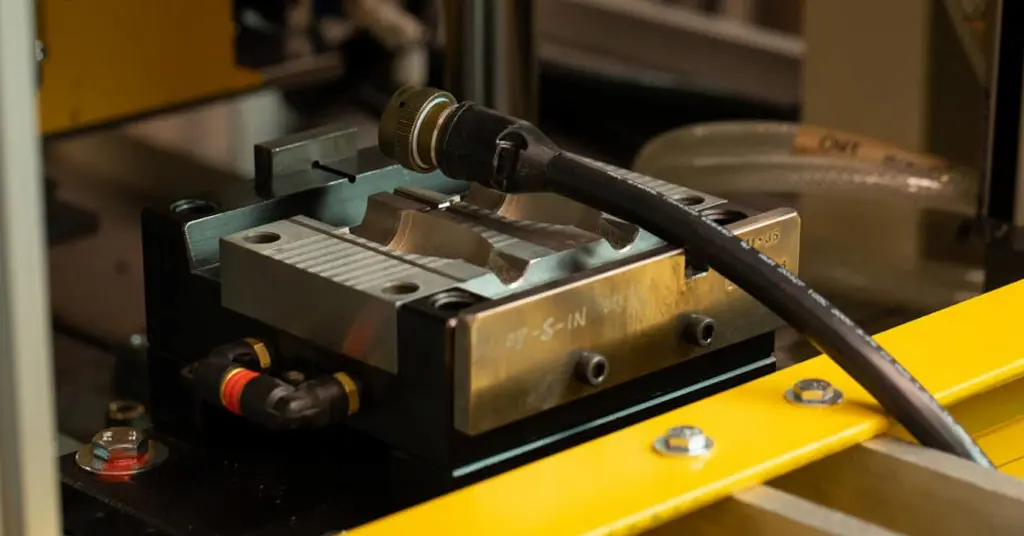
Cable over molding
The process begins with the creation of a substrate, the first part. After base preparation, the base part is placed into an over-molding tool where the injection of the second material is over or around it. This secondary material bonds to the substrate during the molding process, forming a unified part without the need for adhesives or mechanical fasteners. The key to successful overmolding lies in the precise control of the molding parameters and compatible material selection.
This process is valuable in consumer electronics, medical devices, and tool production. In these applications, a combination of strength and comfort is paramount. Next, over molding elevates the quality and performance of products and opens up new avenues for innovation in material use and product design.
Related: What is Injection Molding?
Try Prolean Now!
Overmolding Design Considerations
These considerations not only ensure the manufacturability of the product but also its functionality and aesthetic appeal.
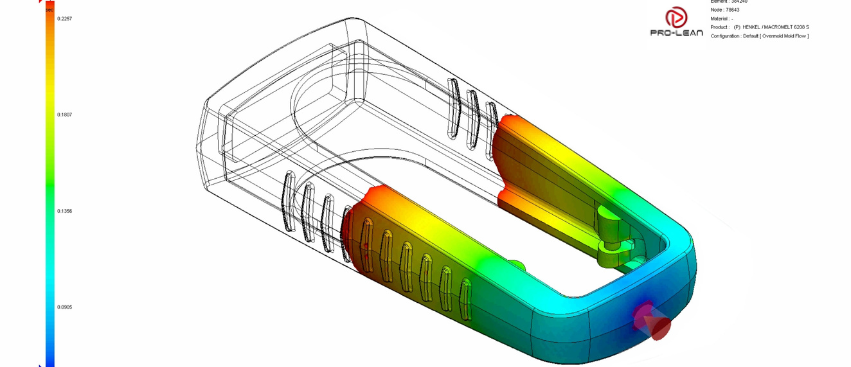
Overmolding design example
Overmolding introduces complexity due to the interaction of different materials. Thus, careful planning and design are crucial to navigate these challenges successfully. From material selection to part design nuances, each element plays a pivotal role in the overall success of the final product.
1. Material Compatibility
Ensuring material compatibility is fundamental in overmold design. The substrate and overmold materials must adhere effectively to avoid separation or failure. Materials with poor chemical compatibility can weaken the bond, leading to product failure. You must consider each material’s properties, including their ability to chemically or mechanically bond. For instance, thermoplastic elastomers (TPEs) are often chosen for their excellent bonding with polypropylene (PP) substrates.
Researching and selecting materials that complement each other’s bonding characteristics are crucial steps in the design process, directly impacting the durability and functionality of the final product.
Related: Best Material for Injection Molding: Which One Suits Your Needs?
2. Bonding Mechanism
The bonding mechanism is a key consideration in overmolding. Mechanical interlocking and chemical bonding are primary mechanisms. Mechanical interlocking involves designing the substrate with features like holes or undercuts that the overmold material flows into, creating a physical bond. Chemical bonding relies on the materials’ inherent properties to adhere to each other.
For successful bonding, understanding the interplay between the substrate’s surface characteristics and the overmold material’s flow behavior is essential. This understanding guides the design of features that enhance bonding, ensuring the overmold material securely attaches to the substrate.
3. Thermal Expansion Coefficients
Materials expand and contract at different rates when exposed to temperature changes. If the substrate and overmold materials have significantly different thermal expansion coefficients, it can lead to warping, cracking, or even delamination under thermal stress.
Designers must select materials with compatible thermal behaviors or design the part to accommodate the differential expansion, ensuring the integrity and longevity of the overmolded part throughout its operational life.
4. Overmold Thickness
Optimizing overmold thickness is crucial for balancing aesthetics, functionality, and manufacturability. Too thick of an overmold layer can lead to issues with cooling and curing, potentially causing defects like sink marks or incomplete curing. Conversely, an overmold that is too thin may not provide the intended tactile or protective benefits.
So, determine the optimal thickness that achieves the desired product characteristics while ensuring efficient and defect-free manufacturing. This involves careful consideration of the overmold material’s properties and the part’s end-use requirements.
5. Substrate Preparation
A clean, properly prepared substrate surface is essential for achieving strong adhesion between the substrate and the overmold. Contaminants on the substrate surface, such as oils, dust, or release agents, can inhibit bonding, leading to weak interfaces and potential product failure.
Surface treatments, including abrasion or the application of primers, can enhance chemical bonding by increasing the surface energy of the substrate. Ensuring the substrate is adequately prepared before overmolding is a critical step in the process.
6. Mold Design
Mold design in overmolding requires careful consideration to accommodate the unique characteristics of both materials and the overmolding process itself. The design must ensure proper alignment between the substrate and the overmold, facilitating a seamless bond. It includes strategic placement of injection molding gates and ejector pins to prevent defects and ensure the integrity of the overmold.

Injection over mold
Additionally, the mold must allow for effective cooling and easy part ejection without damaging the overmold. A well-thought-out mold design is essential for achieving high-quality parts with efficient production cycles.
7. Injection Parameters
Parameters such as injection pressure, temperature, and speed must be tailored to the specific materials and the part’s design. Incorrect settings can lead to poor material flow, inadequate bonding, or defects within the over-molded part. The parameters must ensure that the overmold material fills the intended areas without damaging the substrate or causing cosmetic defects.
8. Venting and Gating
Venting and gating are essential in overmolding to control the flow of the overmold material and prevent defects. Proper gate design ensures material introduction into the mold in a manner that promotes strong bonding and aesthetic quality.
Strategic placement of vents is crucial to allow air and gases to escape from the mold cavity, preventing voids, burns, or incomplete filling.
The Overmold Material Compatibility Chart
It is a tool used in the overmolding process to ensure the successful bonding of two materials. This chart provides detailed information on the compatibility between various substrate materials (the first material to be overmolded) and overmold materials (the second material that is molded over the substrate).
Table: Overmold Material Compatibility Overview
|
Substrate Material |
Overmold Material |
Compatibility |
|
ABS |
TPE |
Good |
|
PC |
Silicone |
Excellent |
|
PP |
TPV |
Good |
|
Nylon |
TPU |
Excellent |
|
PBT |
TPE |
Fair |
Furthermore, the compatibility between these materials is essential for achieving a strong, durable bond that meets the product’s functional and aesthetic requirements.
If you want to know details about material compatibility in overmolding, you can download the detail chart.
Click here to download: The Overmold Material Compatibility Chart.
Try Prolean Now!
Why Silicone Over Molding is Popular?
Silicone overmold design has gained popularity due to its remarkable versatility and performance in enhancing product features. This technique involves molding silicone over another material, offering improved grip, aesthetics, and durability.
![]()
Silicone overmolding example
Silicone’s unique properties, such as its flexibility, temperature resistance, and hypoallergenic nature, make it an ideal choice for many applications, from medical devices to consumer electronics. Its ability to create watertight seals also makes silicone over molds indispensable in waterproofing products.
Next, the adaptability of silicone to intricate designs further solidifies its standing as a preferred material for overmolding, meeting both functional and aesthetic product requirements.
Step-by-Step Process to Design an Overmolding Project
Designing an overmolding project requires a thorough understanding of the materials and the functional requirements of the final product. By following a structured approach, you can navigate the intricacies of overmolding to create aesthetically pleasing and highly functional components.

Over mold mechanism
This step-by-step guide outlines the critical phases in designing an overmolding project, ensuring clarity and success from concept to completion.
1. Conceptualization and Requirements Definition
The first step is to define the project’s scope, including the functional requirements and aesthetic goals. This phase involves brainstorming sessions, market research, and consultations with stakeholders to align the project’s objectives with end-user needs. A clear definition of requirements is crucial for guiding the subsequent design and material selection processes.
2. Material Selection
Selecting the appropriate materials for both the substrate and the overmold is pivotal. This decision is based on the project requirements, including mechanical properties, environmental resistance, and aesthetic considerations.
3. Design Preliminary Concepts
With the project scope and materials in mind, the next step is to develop preliminary design concepts. These initial sketches or CAD models should consider the over-molding process’s constraints, focusing on areas like parting lines, gate locations, and the integration of mechanical interlocks for enhanced bonding.
4. Prototype Development
Developing prototypes is essential for testing the design’s feasibility and the selected materials’ performance. Prototyping allows for the identification and correction of potential issues in the design or material choice before moving into mass production. It’s a critical step for validating the functionality and aesthetics of the product.
5. Mold Design and Fabrication
After finalizing the design and successfully testing the prototype, the next phase is designing and fabricating the mold. This step requires precise engineering to ensure the mold accurately reflects the product design and allows for efficient material flow and solidification. The mold design must also incorporate features for easy part ejection and minimal defects.
6. Process Optimization
Before starting full-scale production, the over-molding process parameters, including injection pressure, temperature, and cycle time, need to be optimized. This phase ensures the highest quality of the final product by minimizing defects and ensuring strong bonding between the substrate and the overmold.
7. Production and Quality Control
With the mold designed and the process parameters optimized, production can begin. Quality control is integral throughout the production phase, with continuous monitoring and testing to ensure the final products meet the predefined standards and requirements.
Examples of Overmolding Part Designs
Here are three practical examples of how overmolding can be applied to part designs to add value and functionality.
Ergonomic Grips for Tools
One of the most common applications of overmolding is the addition of ergonomic grips to tools such as power drills, screwdrivers, and garden shears. The over-molding process allows for a soft, rubber-like material to be molded over a hard plastic or metal substrate.
Overmolding plastic and other materials improves the user’s comfort during extended use and enhances grip strength and control, reducing fatigue and the risk of accidents. The tactile, non-slip surface ensures the tool stays securely in hand, even in wet or oily conditions.
Vibration Dampers for Electronic Devices
Overmolding is also employed in the design of vibration dampers for electronic devices, including smartphones, tablets, and industrial equipment. Manufacturers can significantly reduce the transmission of vibrations by over-molding a vibration-damping material around internal components.
Waterproof Seals for Outdoor Equipment
Outdoor equipment, such as waterproof cameras, outdoor lighting fixtures, and marine devices, often requires robust waterproofing solutions to protect sensitive electronics from water damage. Overmolding offers an effective way to achieve this. It creates a seamless, watertight seal around casings and entry points. A flexible, waterproof material is over-molded onto the equipment’s outer shell, filling gaps and encasing joints to prevent water ingress.
 Waterproof seals for outdoor
Waterproof seals for outdoor
Common Overmolding Issues and Troubleshooting
Overmolding, while advantageous for creating multifunctional and aesthetically pleasing products, can present several challenges throughout the manufacturing process. Recognizing and addressing these issues promptly ensures high-quality outcomes and efficient production.
1. Poor Adhesion
One of the most frequent issues in overmolding is inadequate bonding between the substrate and the overmold material. This can result from incompatible materials, improper surface preparation, or incorrect processing parameters.
To prevent this, ensure material compatibility with a thorough review of the over-mold material compatibility chart and enhance surface preparation techniques. Additionally, optimizing processing parameters such as temperature and injection pressure can improve adhesion.
2. Warping or Distortion
Differential cooling rates between the substrate and the overmold can lead to warping. The solution is to adjust the cooling system design to ensure uniform cooling. Subsequently, consider the thermal properties of both materials during the design phase to minimize stress.
3. Air Traps and Voids: These defects occur when air is trapped in the mold cavity, resulting in incomplete filling. Therefore, optimize the mold design with proper venting and gate placement. Meanwhile, adjusting the injection speed may also help eliminate air traps.
4. Flash Formation
Excess material that escapes from the mold cavity forms a flash. It is often due to excessive injection pressure or poor mold fit. So, calibrate injection pressure and clamp force accurately. Regular maintenance to ensure mold parts align correctly can also prevent flash.
Try Prolean Now!
Get your Overmolded Parts at ProlenTech
Get your over-molded parts with precision and quality at ProleanTech, your trusted partner in innovative manufacturing solutions. Our advanced overmolding services with expertise in diverse applications ensure your products meet but exceed industry standards.
At ProleanTech, we specialize in creating durable, aesthetically pleasing overmolded parts tailored to your specifications, enhancing functionality and user experience. Our dedicated team at ProleanTech works closely with you to select the optimal materials and design for your overmolded parts. We guarantee a seamless integration of materials, resulting in parts that boast superior performance and longevity.
Whether you’re looking to add ergonomic grips to tools or waterproof seals to electronics, we deliver solutions that drive your products to the forefront of the market.
Read more:
- The Clash of Plastics: Thermoset vs. Thermoplastic
- Silicone Injection Molding: Process, Advantages, and Applications
Summing Up
Overmolding is a unique opportunity to enhance product design, functionality, and user experience. You can create innovative products considering material compatibility, design principles, and the overmolding process. Meanwhile, over molding design guide can be a useful tool for this. Prolean’s Overloading Services are here to bring your visions to life, providing expert guidance and high-quality manufacturing solutions tailored to your project’s needs.
FAQs
What is overmolding?
What is overmolding? Overmolding is a manufacturing process where two or more materials are molded together to create a single part, enhancing functionality, aesthetics, or ergonomics.
Why choose silicone for overmolding?
Silicone is chosen for its flexibility, durability, and high-temperature resistance. It’s ideal for creating soft-touch surfaces and waterproof seals on various products.
How do I select compatible materials for overmolding?
Select materials based on their chemical compatibility, bonding properties, and thermal characteristics. Use material compatibility charts and conduct tests to ensure a strong bond.
What are the key design considerations for overmolding?
Key considerations include material compatibility, part geometry, mold design, and processing parameters like temperature and injection pressure to ensure quality and functionality.
Can overmolding be used with all types of plastics?
Not all plastics are suitable for overmolding. Material selection depends on compatibility between the substrate and overmold materials. Some plastics may not bond well without surface treatments.
Resources
- Aliyeva, N., Sas, H. S., & Okan, B. S. (2021). Recent developments on the overmolding process. Composites Part A: Applied Science and Manufacturing, 149, 106525. https://doi.org/10.1016/j.compositesa.2021.106525
- Miao, T., Wang. (2023). Effect of Injection Overmolding Parameters on the Interface Bonding Strength of Hybrid Thermoset–Thermoplastic Composites. Polymers, 15(13), 2879. https://doi.org/10.3390/polym15132879

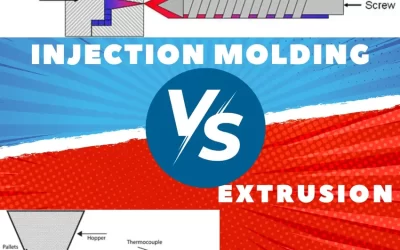
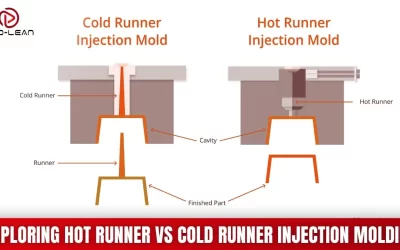
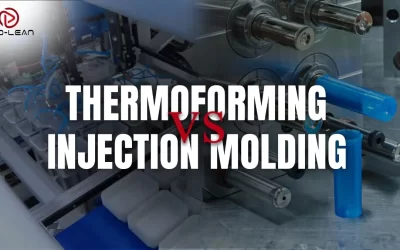
0 Comments